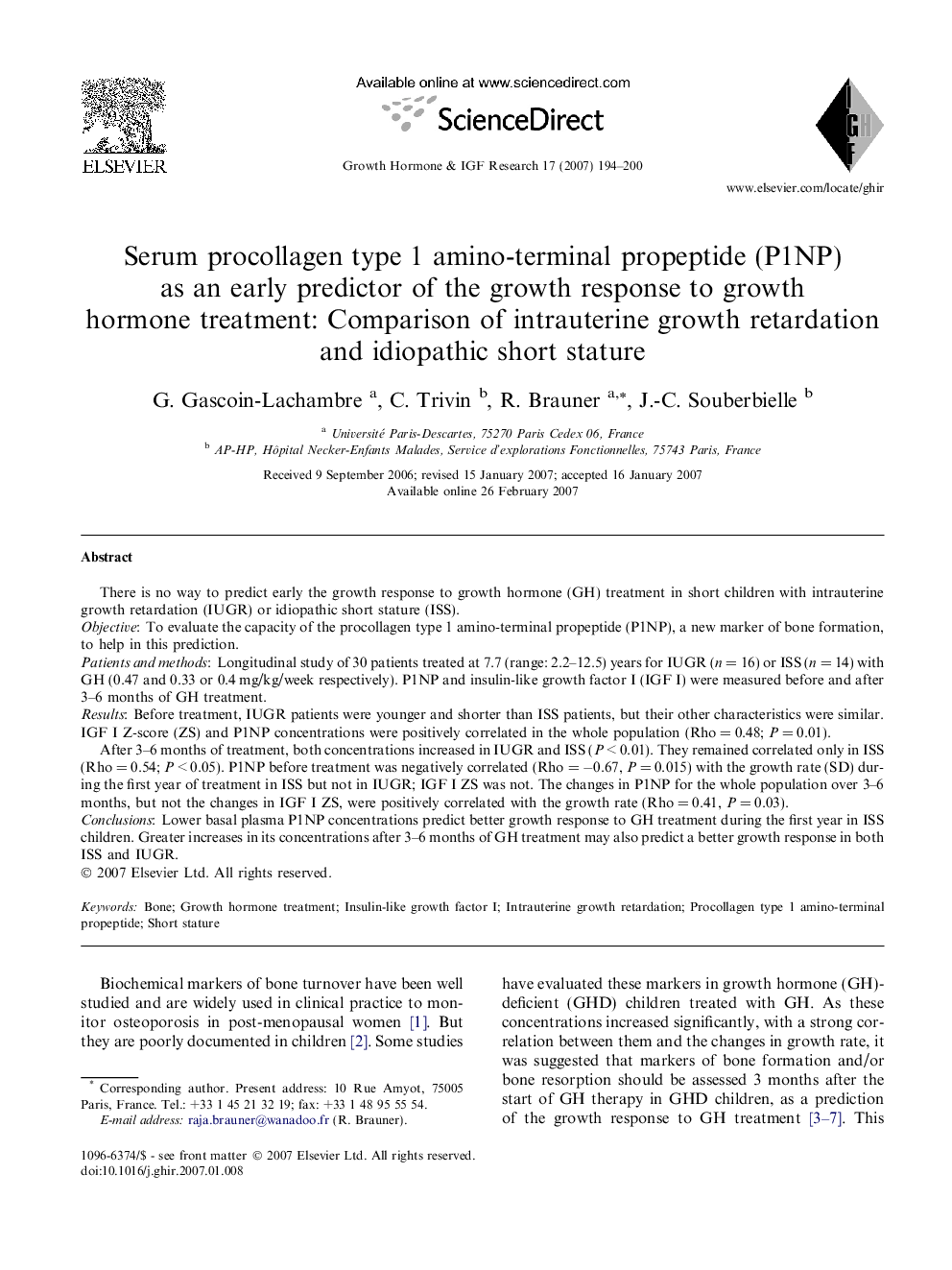| Article ID | Journal | Published Year | Pages | File Type |
|---|---|---|---|---|
| 2803634 | Growth Hormone & IGF Research | 2007 | 7 Pages |
There is no way to predict early the growth response to growth hormone (GH) treatment in short children with intrauterine growth retardation (IUGR) or idiopathic short stature (ISS).ObjectiveTo evaluate the capacity of the procollagen type 1 amino-terminal propeptide (P1NP), a new marker of bone formation, to help in this prediction.Patients and methodsLongitudinal study of 30 patients treated at 7.7 (range: 2.2–12.5) years for IUGR (n = 16) or ISS (n = 14) with GH (0.47 and 0.33 or 0.4 mg/kg/week respectively). P1NP and insulin-like growth factor I (IGF I) were measured before and after 3–6 months of GH treatment.ResultsBefore treatment, IUGR patients were younger and shorter than ISS patients, but their other characteristics were similar. IGF I Z-score (ZS) and P1NP concentrations were positively correlated in the whole population (Rho = 0.48; P = 0.01).After 3–6 months of treatment, both concentrations increased in IUGR and ISS (P < 0.01). They remained correlated only in ISS (Rho = 0.54; P < 0.05). P1NP before treatment was negatively correlated (Rho = −0.67, P = 0.015) with the growth rate (SD) during the first year of treatment in ISS but not in IUGR; IGF I ZS was not. The changes in P1NP for the whole population over 3–6 months, but not the changes in IGF I ZS, were positively correlated with the growth rate (Rho = 0.41, P = 0.03).ConclusionsLower basal plasma P1NP concentrations predict better growth response to GH treatment during the first year in ISS children. Greater increases in its concentrations after 3–6 months of GH treatment may also predict a better growth response in both ISS and IUGR.
